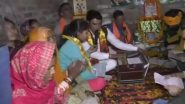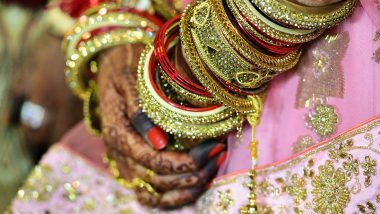New Delhi, October 9: There are 17.26 million married children and adolescents within the age group of 10-19 years in India, child rights NGO CRY said in a new study, highlighting the burden of under-age marriage plaguing the country. The study 'Status and Decadal Trends of Child Marriage in India' was released ahead of the ‘International Day of the Girl Child' on October 11.
"With a huge burden of under-age marriage - 17.26 million married children and adolescents within the age group of 10-19 years or 7 per cent of the population in the same age group (census 2011) - are married in India. The data also reveals that girls between 10-19 years of age account for 75 per cent of all the married children in India," it said.
Highlighting worrying trends over the last decade (2001-2011), the study stated that girls in rural areas within the age-group of 15-19 years continue to account for more than half (57 per cent) of all married children. It also highlighted a surge of child marriages especially in urban areas (41 per cent).
It also pointed out high vulnerability of children to marriage during the early and late adolescence. According to the study, marriage among early adolescents (10-14 years) grew by an alarming 35 per cent over 2001-2011, while it decreased by 0.22 per cent among late adolescents (15-19 years).
It also said the number of married girls within 10-19 years grew marginally by 0.23 per cent over 2001-2011, however, marriage among boys has increased by 19 per cent over the same period. Puja Marwaha, CEO, CRY said child marriage is a violation of human rights and has a higher impact on girls.
“While child marriage is a practice that affects both girls and boys, its impact on girls, especially from marginalised communities, is higher. There is also an urgent need for strengthening implementation of the Prohibition of Child Marriage Act, 2006.
“CRY strongly believes that the effects of child marriage are intergenerational and directly impacts education, health, nutrition and poverty of a society and nation. Ensuring good health and nutrition of girls, completion of 12 years of schooling, availability of life skill education and opportunities for higher education are likely to break this vicious cycle of intergenerational deprivation, malnutrition and poverty,” she said.
The study was released at a webinar on 'Child Marriages in India: Re-evaluating Strategies' held by Child Rights and You (CRY) wherein some of the eminent policy makers, academicians as well as civil society experts shared their thoughts.
The study has used secondary data (Indian Census rounds of 1991, 2001 and 2011; and the latest round of the National Family Health Survey 2015-16) on the status and trends of child marriage in India while highlighting their possible socio-economic determinants.
(This is an unedited and auto-generated story from Syndicated News feed, LatestLY Staff may not have modified or edited the content body)













 Quickly
Quickly





















